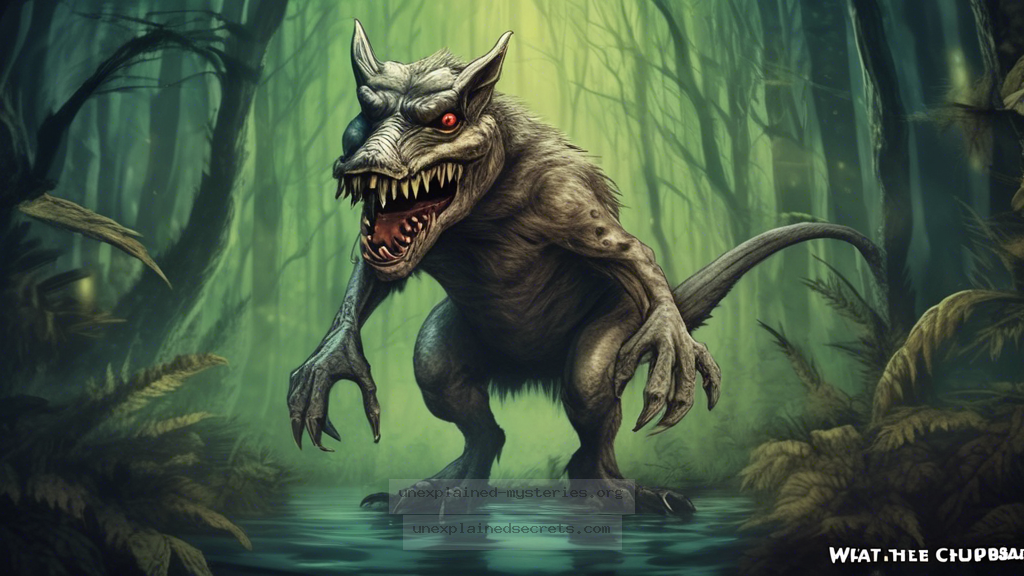What Secrets Lie Behind the Legend of the Chupacabra: A Deep Dive into Cryptozoology’s Most Notorious Creature?
What Secrets Lie Behind the Legend of the Chupacabra: A Deep Dive into Cryptozoology’s Most Notorious Creature?
The Chupacabra, a creature rooted in folklore and cryptozoology, has captured the imagination of many and continues to spark debate and investigation. This enigmatic being, first reported in Puerto Rico in the mid-1990s, is said to feed on livestock, particularly goats, leaving behind a trail of drained carcasses. The question of what lies behind the legend of the Chupacabra is compelling not only for those fascinated by cryptids but also for scientists and skeptics alike. This blog post will delve into the details surrounding the Chupacabra, exploring its origins, sightings, and the ongoing debate regarding its existence.
Historical Context: The Birth of a Legend
The term “Chupacabra” comes from the Spanish words “chupar” (to suck) and “cabra” (goat), aptly describing the creature’s alleged behavior. The first confirmed sightings date back to 1995 in Puerto Rico when a series of livestock killings were reported. Farmers found their goats dead, with puncture wounds in their necks and all their blood drained. These shocking events led to widespread media coverage, further fueling the legend. Over the years, Chupacabra reports have emerged from various regions, including Mexico, the United States, and even parts of South America, each sighting contributing to the creature’s ever-growing mythos.
Core Concepts: What Do We Know About the Chupacabra?
Descriptions of the Chupacabra vary significantly, which adds to the mystery. Some witnesses describe a small, reptilian creature with spines along its back, while others depict a hairless dog-like animal. The variance in descriptions has led to a plethora of theories regarding its origins. Here are some core concepts related to the Chupacabra:
- Physical Appearance: Reports often suggest a creature that is 3-4 feet tall, with a long tail and glowing red eyes.
- Behavior: Alleged sightings often describe the Chupacabra as nocturnal and elusive, typically attacking livestock at night.
- Habitat: The Chupacabra is said to thrive in rural areas, particularly where livestock is abundant.
Practical Implications: Evidence and Investigations
Despite numerous reports, tangible evidence supporting the Chupacabra’s existence remains elusive. Investigations have often yielded either inconclusive results or explanations for the sightings. Scientific analyses of purported Chupacabra remains have frequently identified them as known animals suffering from diseases such as mange or malnutrition. For instance, a famous case in 2007 involved the discovery of a hairless creature in Texas, which DNA testing later confirmed to be a coyote with mange. This highlights a critical aspect of cryptozoological studies: distinguishing between myth and reality.
Alternative Perspectives: Cryptozoology vs. Skepticism
While many enthusiasts believe in the Chupacabra’s existence, skeptics argue that the creature is a product of folklore, fueled by a combination of fear, misunderstanding, and media sensationalism. Skeptics often point to the psychological phenomenon known as “pareidolia,” where humans perceive familiar shapes or patterns, such as animals, in random stimuli. This explanation could account for many sightings, where misidentified animals are mistaken for the Chupacabra. The debate continues, with passionate arguments on both sides regarding the validity of cryptids.
Common Misconceptions: Myths vs. Facts
Many myths surround the Chupacabra that contribute to its mystique but also cloud the understanding of what it may truly be. Some common misconceptions include:
- Myth: The Chupacabra is a supernatural being.
- Fact: Most evidence points to it being a misidentified animal or a case of mistaken identity.
- Myth: The Chupacabra can cause immediate harm to humans.
- Fact: No confirmed attacks on humans have been documented, though livestock predation is common.
Best Practices for Investigation: How to Approach Cryptozoological Studies
For those interested in investigating cryptids like the Chupacabra, adhering to best practices can enhance credibility and understanding. Here are some recommended steps:
- Document Everything: Keep detailed notes, photographs, and any physical evidence encountered during investigations.
- Engage with Experts: Collaborate with biologists or wildlife experts who can help identify potential animals involved in sightings.
- Maintain Objectivity: Approach each case with an open mind, balancing belief with skepticism to avoid confirmation bias.
Future Developments: Ongoing Research and Theories
The Chupacabra continues to be a subject of research and curiosity. As advancements in technology, such as DNA analysis and wildlife tracking, improve, researchers hope to uncover more about the creatures behind these sightings. Genetic studies may help identify whether any of the reported Chupacabra remains share a lineage with known species. Additionally, ongoing investigations into livestock predation and the potential for new cryptic species are vital areas of study within cryptozoology.
Real-World Examples: Notable Sightings and Reports
Several notable sightings have contributed to the Chupacabra’s lore. Some distinguished cases include:
| Year | Location | Details |
|---|---|---|
| 1995 | Puerto Rico | First reported sightings; multiple livestock killings. |
| 2007 | Texas, USA | Hairless creature found; identified as a coyote with mange. |
| 2010 | Chile | Series of livestock deaths; photos circulated online igniting debates. |
Conclusion: The Enigma of the Chupacabra Continues
As we explore the Chupacabra, it becomes clear that this creature embodies the intersection of myth, fear, and the unknown. While evidence remains sparse, the cultural significance and the sheer number of sightings continue to fuel discussions within both the cryptozoological community and the general public. Whether the Chupacabra is a real creature, a misidentified animal, or simply a product of folklore, it undoubtedly serves as a reminder of our fascination with the mysteries that lie in the shadows of our world. The legend of the Chupacabra encourages us to keep questioning, exploring, and seeking out the truth behind the unknown.
Other Articles
Recent Posts
- What Happened to Flight MH370? The Conspiracy Theories That Still Haunt Us
- What Secrets Lurk Within the Walls of the Infamous Trans-Allegheny Lunatic Asylum?
- What Evidence Supports the Existence of Bigfoot in the Pacific Northwest?
- What Happened to the Indus Valley Civilization? Unraveling the Mysteries of Ancient Urban Life
- Can Telepathy Be Scientifically Proven Through Laboratory Evidence?







